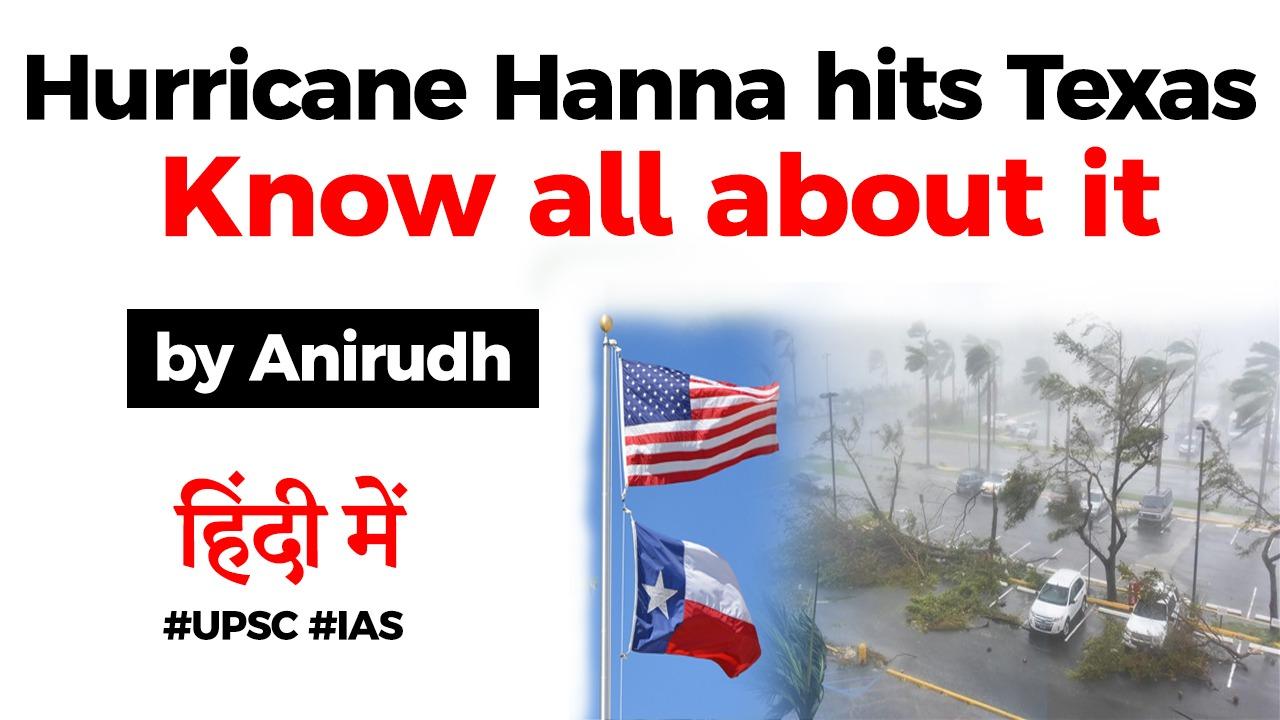Table of Contents
- Cyclones are centers of low pressure. They are surrounded by closed isobars having increasing pressure outward.
- Due to coriolis force blowing winds are deflected from their paths i.e rightward in northern hemisphere and leftward in southern hemisphere, that’s why it gets circular wind blowing system

Tropical cyclones
- They are low pressure atmospheric systems of low latitudes.
- Tropical cyclones have different names in different regions of the world.
- South-East Asia (China and Japan Sea): “Typhoons”
- Caribbean Sea: “Hurricanes”
- Indian Ocean: “Tropical cyclones”
- North East coast of Australia: “Willy-Willy”

How do they form?
- (i) Presence of warm oceanic surface with a temperature of 27⁰C or more. This warm surface is source of thermal convection and strong hot and humid currents. It is because of this factor that tropical cyclones are characteristically developed over east coast of continents under influence of warm oceanic currents.
- (ii) Presence of ITCZ supports further intensification of low pressure and augments supply of moisture due to inflow of trade winds. (iii) Coriolis Force helps in deflection of strong inflowing winds to generate circulatory system. In the absence of coriolis force, tropical cyclones do not originate between 5⁰N to 5⁰S.
- (iv) Presence of high moisture in the atmosphere as moisture becomes the source of latent heat of vaporization which is the basic source of energy for the temperate cyclone. (v) Minimum vertical wind shear to support unrestricted flow of air currents upwards. (vi) Divergence of air in the upper troposphere.
Structure of Hurricane
- As such storm systems rotate faster and faster, an eye forms in the centre.

About Hanna Hurricane
- Texas, is now facing another threat, as Hurricane Hanna made landfall here on Saturday (July 25).
- Officials have warned about a life -threatening storm surge and strong winds, at a time when Texas has more than 380,000 Covid -19 cases and has recorded over 5,000 deaths.

- Hanna reached wind speeds of up to 90 mph. The hurricane is expected to produce heavy rains across portions of southern Texas and northeastern Mexico, which will result in “life-threatening” flash flooding and isolated minor to moderate river flooding.
- As per the latest update issued by the National Hurricane Centre (NHC), the centre of Hanna has moved into northeastern Mexico and the storm surge warning for Texas has been discontinued.
How tropical cyclones are named
- Cyclones that form in every ocean basin across the world are named by the regional specialised meteorological centres (RSMCs) and Tropical Cyclone Warning Centres (TCWCs).
- There are six RSMCs in the world, including the India Meteorological Department (IMD), and five TCWCs.
How are Hurricanes named?
- In 1978, it was decided that the National Hurricane Centre (NHC) will use alternating men and women’s names, on the lines of the practice adopted by Australia’s bureau of meteorology three years earlier in 1975.
- Typically, the names should be short and should be readily understood when broadcast.
- There are six such lists of names with 21 names each (each starting with one alphabet except Q, U, X, Y and Z because names beginning with these letters are in short supply) that are used in rotation, which is to say that the list of names attributed to Atlantic tropical storms in 2019 will also be used in 2025.
- However, names of storms that caused particular damage and deaths are retired.
- Some of the retired names include Erika (2015), Irma (2017) and Florence (2018) among several others.
Why is it important to name tropical cyclones?
- Adopting names for tropical storms makes it easier for people to remember, as opposed to numbers and technical terms. Apart from the general public, it also helps the scientific community, the media, disaster managers etc.
- With a name, it is easy to identify individual cyclones, create awareness of its development, rapidly disseminate warnings to increased community preparedness and remove confusion where there are multiple cyclonic systems over a region.
Latest Burning Issues | Free PDF






















 WhatsApp
WhatsApp